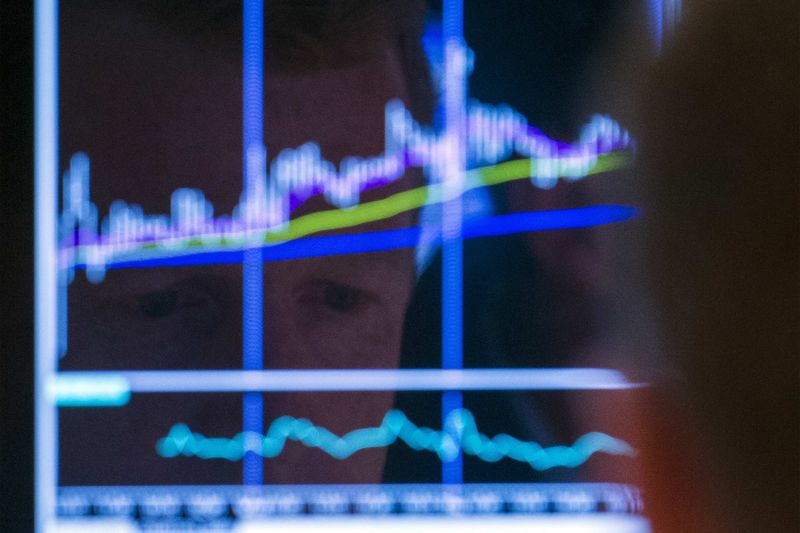China chip stocks fall as US considers allowing Nvidia H200 sales
Investing.com -- European cement producers are poised for a substantial boost in profitability as tighter carbon trading rules take effect next year, with prices potentially rising over 30% by 2030, Barclays said in a recent note
The brokerage upgraded its earnings forecasts significantly, positioning itself 19-28% above 2030 consensus estimates for the sector, as the EU Emissions Trading System enters its next phase starting January 2026.
Cement prices could climb approximately 5% in 2026 alone as free carbon allowance allocations begin declining from current levels toward zero by 2034, according to the Barclays analysis of 176 cement plants across Europe.
"Carbon could become the single largest cost driver at nearly 40% of opex as free allowances are removed," the analysts said, projecting that carbon costs at €80 per tonne would imply costs of approximately €47 per tonne of cement once free allowances run out, against current production costs of €75-80 per tonne.
The research shows large-scale producers Heidelberg Materials and Holcim positioned at the 30th and 50th percentile respectively of the European carbon cost curve, despite accounting for roughly 40% of the EU market combined.
This positioning creates a potential cost advantage of around €6 per tonne for Heidelberg Materials, assuming pricing is set by plants at the 80th percentile of the cost curve, Barclays calculated.
The brokerage estimates the benchmark for free carbon allocations will reset to around 0.65 tonnes of CO2 per tonne of grey clinker from the current 0.693 level, implying a 1.3% annual decline.
Combined with volume factors, this translates to at least an 8.5% reduction in free allowances for 2026.
European margins for Heidelberg Materials could expand from 20% in 2025 to 28% by 2030 under Barclays’ base case, while Holcim’s European margins are projected to rise from 24% to 29% over the same period.
Barclays upgraded Heidelberg Materials to "overweight" from "equal weight" with a price target of €261, up from €194. The brokerage downgraded Buzzi to "equal weight" from "overweight" while raising its price target to €55 from €53.
The upgrade on Heidelberg reflects a recent derating versus Holcim that created "an attractive valuation entry point," Barclays said, noting shares had experienced a 0.4x EBITDA turn rerating since end-July compared with 1.6x for Holcim.
The downgrade on Buzzi stems from "a structurally more challenging CO2 cost position relative to peers," the brokerage said, citing scale limitations and licensing challenges particularly in Italy, alongside a heavy capital expenditure cycle ahead.
Barclays maintained "overweight" ratings on Holcim and Vicat, raising price targets to CHF82 and €86 respectively.
The analysis comes as EU carbon policy continues to evolve. The Carbon Border Adjustment Mechanism was adopted into law on Oct. 20, maintaining coverage of 99% of embedded emissions while exempting 90% of importers, mostly small and medium-sized enterprises.
ETS II, covering heating and transportation fuels, was recently delayed by one year to 2028, though Barclays’ sustainable investing team said evidence suggests "little wholesale reforms" are planned for the broader system.
"The long-term direction of travel on EU carbon pricing policy remains tilted towards tighter standards," the bank said, though it noted potential near-term changes could occur through adjustments to free allowance supply, benchmark values or the Market Stability Reserve.
Carbon price trajectories remain uncertain. Futures curves suggest 2030 allowances at €95 per tonne, while BloombergNEF forecasts prices above €100 by 2028 and €142 in 2030. The European Commission retains discretion to adjust supply through the Market Stability Reserve if inflation concerns emerge.
Cement producers have demonstrated substantial pricing power since energy cost inflation following Russia’s invasion of Ukraine, maintaining elevated prices even after energy costs declined.
Barclays attributed this to lack of import alternatives, greater focus on value over volume, higher marginal costs from carbon creating supply discipline, and sector consolidation.
However, near-term risks persist. Pricing has been soft in Germany this year driven by independent producer pressure, the bank noted. Before around 2029, when free allocations drop more materially, higher utilization at smaller plants could offset carbon costs and drive pricing competition.
Under Barclays’ base case, implied earnings before interest and tax growth between now and 2030 reaches low double-digit percentages annually, approximately 2-3 percentage points above the upper end of major producers’ management targets.
The bank said larger producers hold advantages including flexibility to close high-cost plants and stronger balance sheets to undertake costly decarbonization projects such as carbon capture and storage.
Heidelberg has already announced closures of plants that historically sat at the upper end of the cost curve, Barclays noted, allowing the company to improve its average position and capture larger spreads between its costs and market prices.
